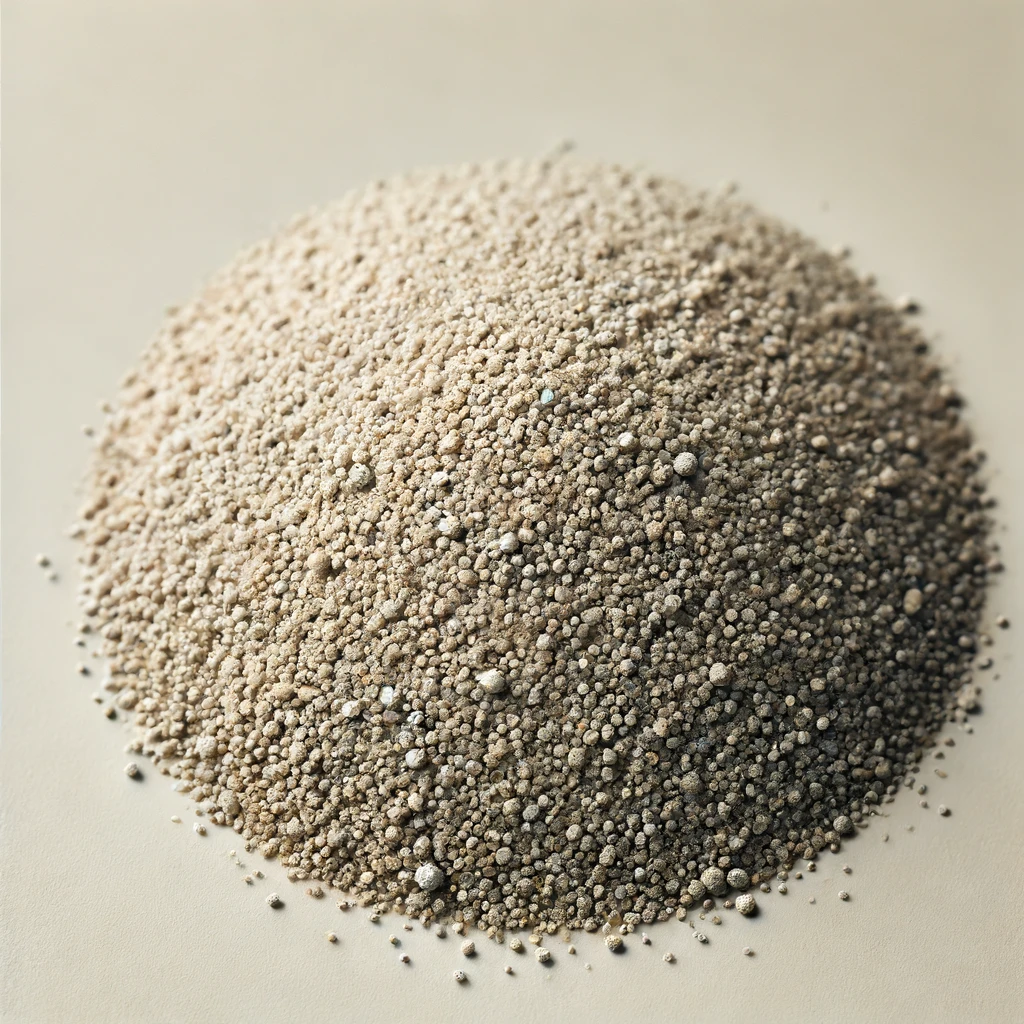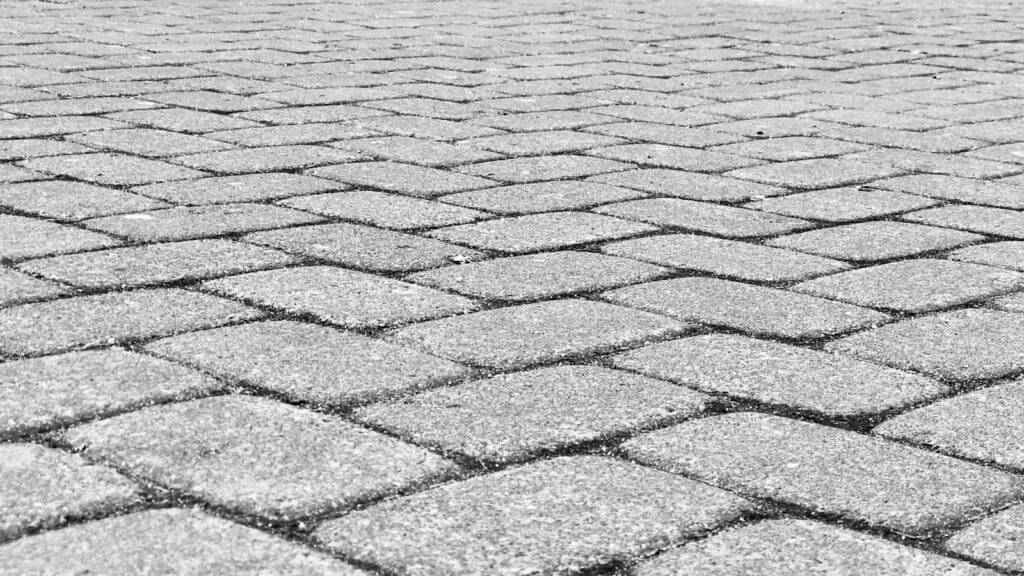Welcome to the World of Polymeric Sand
Have you ever wondered what makes your garden’s patio stones or brick paths remain firm and neat?
The secret lies in the grainy stuff we often take for granted – sand!
But not just any sand. We’re talking about polymeric sand.
This article will help you understand the unique properties of polymeric sand, a game-changer in the construction industry. I’ll break down what it is, its benefits, and how to apply it.
We will explore its distinct composition, factors to consider before using it, and where else it can be beneficial outside of typical hardscaping. Finally, we will cover instances when you should avoid using polymeric sand.
Whether you’re a professional, an avid DIYer, or just curious, this guide is guaranteed to provide useful knowledge.
So, let’s get started.
Table of Contents
Understanding Polymeric Sand in Construction

What is Polymeric Sand?
Polymeric sand is a specialized type of sand used for locking the joints of stone pavers, brick pavers, and patio stones in hardscaping and landscaping projects. This product consists of a fine sand combined with special additives such as polymers, which help to develop enhanced binding properties.
Key Benefits of Polymeric Sand
- Prevents Weed Growth: Once set, polymeric sand prevents weed seeds from getting through the paver joints.
- Reduces Insect Infestation: It keeps ants and other insects from burrowing between pavers.
- Prevents Erosion: The binding agents in the sand help to prevent erosion caused by water.
- Stabilizes Pavers: It keeps pavers in place, reducing movement and the need for readjustments.
Application Process of Polymeric Sand
The application of polymeric sand involves several important steps to ensure its effectiveness:
Step 1: Preparation
- Ensure the surface is dry and clean.
- Set your pavers in place.
Step 2: Sand Application
- Spread the polymeric sand evenly across the surface.
- Sweep the sand into the paver joints until they are full.
Step 3: Activation
- Compact the pavers to help settle the sand into the joints.
- Lightly spray water over the surface to activate the polymers.
Step 4: Curing
- Allow the sand to cure and harden, typically within 24 hours.
- Restrict usage of the area during the curing process.
Where to Use Polymeric Sand
Polymeric sand is primarily used in various outdoor hardscaping projects, such as:
- Walkways
- Patios
- Driveways
- Pool decks
This durable sand improves the longevity and aesthetic of these surfaces.
Comparison: Polymeric Sand vs. Regular Sand
| Feature | Polymeric Sand | Regular Sand |
|---|---|---|
| Binding Properties | Contains polymers for strong binding | Loose particles, no binding agents |
| Weed/Insect Prevention | Effective in preventing weed growth and insect infestation | Offers no protection against weeds or insects |
| Durability | High, reduces paver movement and erosion | Low, easily displaced |
The Distinct Composition of Polymeric Sand
What Does Polymeric Sand Contain?
Polymeric sand is not your typical sand. It’s a proprietary blend of fine sand mixed with additives that are designed to create a stronger bond than ordinary sand. The primary ingredients in polymeric sand include:
- Fine Sand: Forms the base of polymeric sand and offers precise filling of the gaps in between pavers.
- Polymers: The ‘polymeric’ component of the sand, these are chemicals that form a strong, water-resistant bond.
- Binding Agents: These help to enhance the bonding effect of the polymers and keep the sand firmly in place.
Understanding Different Types of Polymeric Sand
Polymeric sand can come in two versions: traditional and next-gen polymeric sand. Traditional versions require thorough cleaning of the paver surface to prevent hazing, whereas next-gen polymeric sand is less likely to cause hazing due to advanced polymer science.
Considerations Before Using Polymeric Sand

Think About the Weather
Weather plays a vital role in the application of polymeric sand. Applying polymeric sand on a rainy day can result in a messy scenario, as the water can activate the polymers prematurely. Therefore, it’s suggested to schedule the application on a dry, sunny day.
Check the Temperature
The temperature can also impact the effectiveness of polymeric sand. The ideal temperature for applying polymeric sand ranges from 40°F (4.4°C) to 90°F (32.2°C). Applying sand outside of these temperature ranges could reduce the efficacy of the binding process.
Additional Uses of Polymeric Sand
Beyond Hardscaping
Although primarily used in hardscaping, polymeric sand has other applications too:
- Foundations: It can be employed in the construction of house foundations where solidifying soil is required.
- Resealing Existing Paths: Over time, normal sand between pavers can wash away. Polymeric sand can be used to reseal these openings.
- Creating Artistic Designs: Polymeric sand comes in various colors, which allows for the creation of visually appealing designs in landscaped areas.
Is Polymeric Sand Waterproof?
Polymeric sand is water-resistant, but not entirely waterproof. When it is applied and cured properly, polymeric sand forms a solid bond that holds up well against rain and other forms of moisture. However, it does not completely prevent water from seeping through. The water resistance primarily helps in preventing erosion within the joints and keeping the pavers stable.
Maintenance Tips for Polymeric Sand
Regular Cleaning
Ensure to regularly remove debris and dirt from the surface to avoid the breakdown of the binding agents.
Avoid High-Pressure Washing
High-pressure washing can damage the integrity of the polymers, so it’s best to use gentle cleaning methods.
Periodic Reapplication
Depending on the climate and wear, you may need to reapply polymeric sand every few years to maintain its effectiveness.
When Should You Not Use Polymeric Sand
While polymeric sand offers a multitude of advantages for hardscaping and landscaping projects, it may not be ideal for every situation. Here are some scenarios where you might consider avoiding its use:
Low Drainage Areas
Polymeric sand sets by using water to activate its binding agents. Therefore, using it in areas with poor drainage can result in standing water that does not allow the sand to set properly. This could lead to weak joints and an overall ineffective application. For areas with low drainage, opting for regular sand or a different method of joint stabilization might be a better choice.
Wet or Rainy Conditions
Applying polymeric sand in wet or rainy conditions is problematic. The sand needs to be applied on a dry surface and activated with a controlled amount of water. Rain can provide uneven water distribution, causing the polymers to activate prematurely and result in a sticky, unusable mess.
Temperature Extremes
Extremes of heat or cold can affect the effectiveness of polymeric sand. The ideal temperature range for application is between 40°F (4.4°C) and 90°F (32.2°C). Outside of this range, the polymers may not react properly, leading to suboptimal binding and eventual failure of the joint stabilization.
Narrow Joints
Polymeric sand requires a certain joint width to properly settle and activate the binding agents. If the joints between your pavers are too narrow (typically less than 1/8 inch), the sand may not effectively fill the gaps and bind. Regular sand may be more practical for very narrow joints.
DIY Repairs
Polymeric sand is not always the best option for quick, DIY repairs, especially if you’re not familiar with the application process. Mistakes in spreading, watering, and curing can lead to a less durable finish. If you’re undertaking a small-scale repair and are not confident in your technique, consider using regular sand until a professional can provide assistance.
Antique or Sensitive Pavers
Antique or particularly sensitive pavers may not be compatible with polymeric sand. The chemicals and binding agents can sometimes cause discoloration or even damage to older or more delicate paving materials. Always test a small area or consult with a material expert before applying polymeric sand to such surfaces.
High Water Table Areas
In areas with a high water table, groundwater can rise and interfere with the polymeric sand, particularly during heavy rains. This constant moisture exposure can hinder the curing process and weaken the binding agents, ultimately reducing the durability of your hardscaped surfaces.
Consider these factors carefully when deciding if polymeric sand is right for your project.
Wrapping Up: The Significance of Polymeric Sand
In conclusion, polymeric sand plays an essential role in hardscaping and landscaping, enhancing durability and aesthetics. The unique blend of fine sand, polymers, and binding agents provides high strength, prevents weed growth and insect infestation, and offers erosion control.
Its application, while dependent on weather and temperature, is straightforward and involves careful distribution, compacting, watering, and curing. Despite its primary use in outdoor hardscaping, the versatility of polymeric sand extends to foundations, existing path seals, and artistic designs.
While considerably more effective than regular sand in many respects, polymeric sand is not a one-size-fits-all solution and may be unsuitable for certain scenarios such as low drainage areas, temperature extremes, and narrow joints. Therefore, it’s essential to consider all factors for successful application and maximum benefits.
Frequently Asked Questions – FAQs
What is polymeric sand?
Polymeric sand is a special type of sand used in landscaping and hardscaping to lock the joints of stone pavers, brick pavers and patio stones. It is composed of fine sand and special additives like polymers to develop strong binding properties.
What are the key benefits of polymeric sand?
Polymeric sand helps to prevent weed growth, reduce insect infestation, prevent erosion, and stabilize pavers by keeping them in place and reducing the need for readjustments.
How to apply polymeric sand?
The application process involves prepping the surface, evenly spreading the sand across the surface, sweeping it into the paver joints, compacting the p






